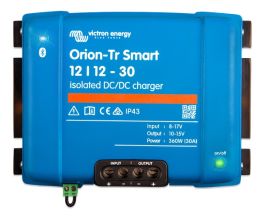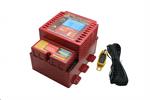I would be a little careful with the recommendations on the BattleBorn website. They are treading a very thin line with the 'drop in lead acid replacement' batteries. This has been discussed to death here, but the company line is that their batteries will work with systems designed for lead acid - which is true to an extent. As a result they recommend/sell a bunch of accessories that are really lead acid specific and publish charge parameters that cover the normal lead acid range. However, their batteries will last longer and work better with systems that are actually designed from the ground up to work with the LiFePO4 chemistry.
To give an example, float charging of LiFePO4 batteries reduces their lifespan. The Redarc charger will float charge your battery even in lithium modes - which you don't want. The way around this either to do away with float charging all together, or set the float charge voltage to ~13.2V, at which point the battery won't charge.
Anyway, my point is don't always believe the marketing material, and if you are starting our with a lithium system buy equipment with programmable set points that can be set to the optimun values for lithium (which is not the Redarc).



